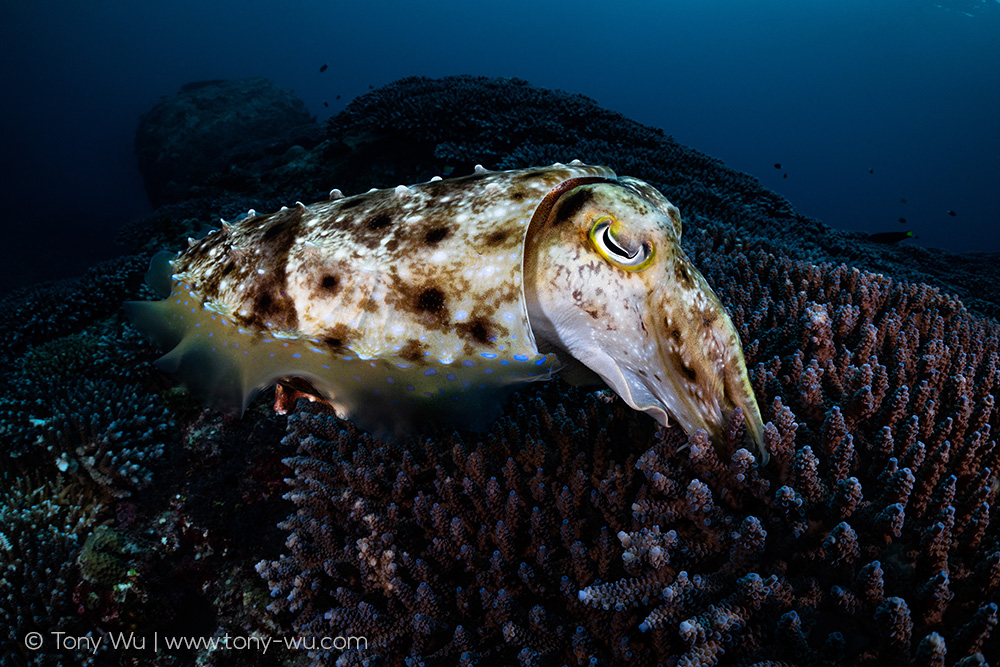This is a male Sepia latimanus, aka broadclub cuttlefish, kobushime コブシメ in Japanese.
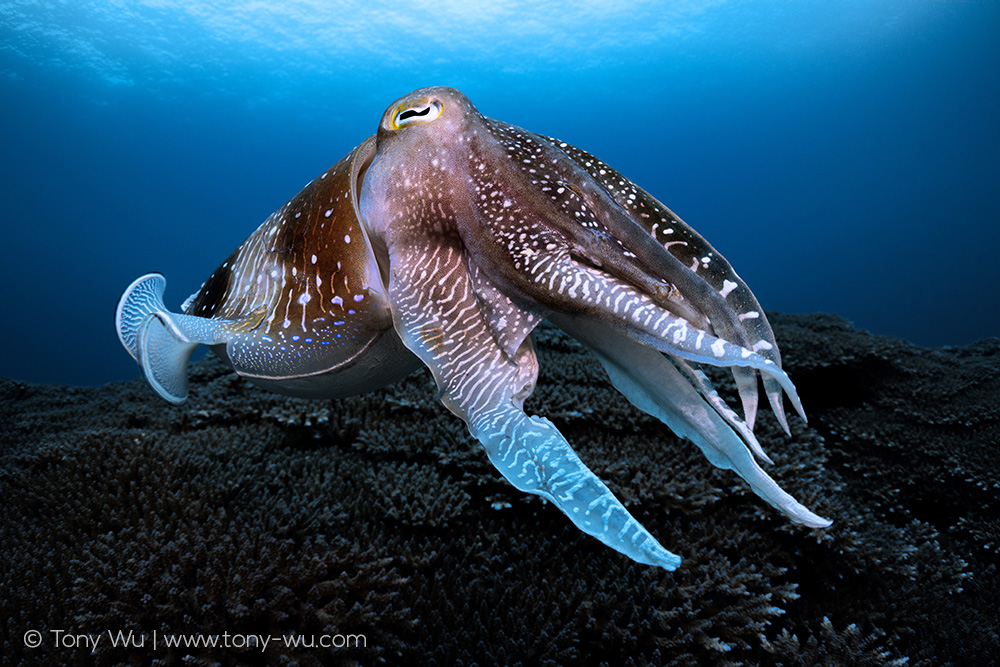
Behind him is a large field of table coral (Acropora sp.), home to countless marine residents. At a particular time of year, the corals serve as a stage for cephalopod intimacy.
I recently had the unexpected pleasure of observing the reproductive rituals of these cuttlefish. Unexpected because it was relatively late in the year, when courtship, mating and such should have already finished. But there they were, by the dozens, doing what they needed to do to make baby broadclubs (which are squiggly adorable, in case you’re interested).
The primary order of business for mature males like this is to tidy up and present oneself to prospective mama cuttlefishes. One does this by modulating chromatophores and papillae to present a plain, low-contrast, minimally patterned look—dressed to impress, so to speak.
Males can adjust half their bodies to such soothing courtship attire while keeping the other half normal, like this:
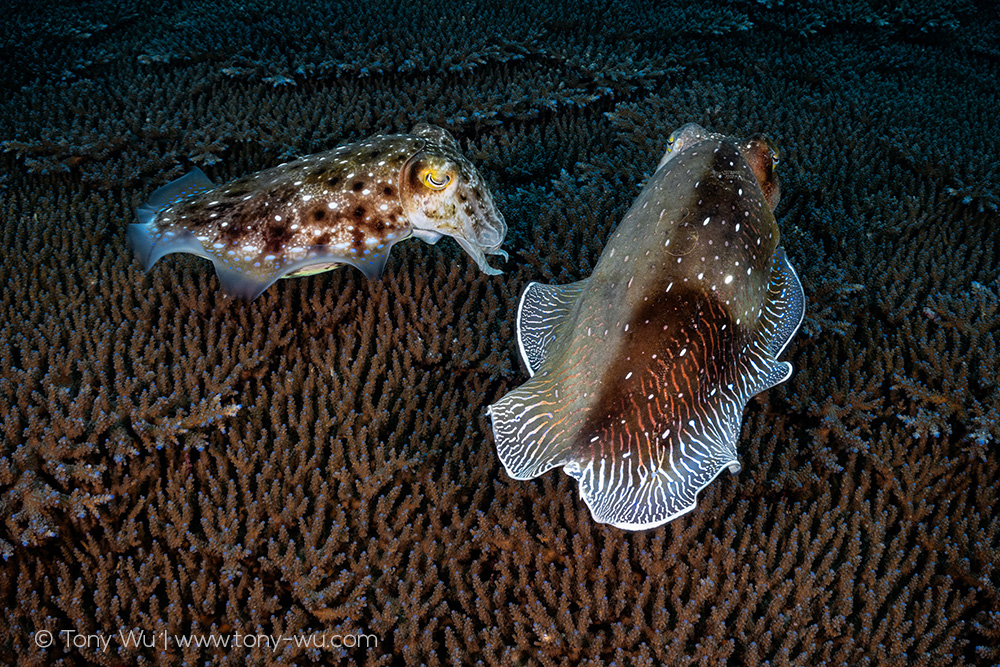
“Why go to the trouble?” you might ask.
In short…because rivals.
It is rare that a cuttlefish has the undivided attention of the females in a given area. Other males inevitably want in on the action, which—as you might imagine—can cramp the style of a guy making his moves.
In the photo above, the male is on the right. He’s showing his lovey-dovey side to the female, while maintaining his “Don’t mess with me bro” side on the other.
Boys being boys, “Who you talking to?” moments happen with reasonable frequency.
Tentacles are flourished. Bodies are shoved. Confrontations alternate between motionless standoffs and blinding action. The objective is to establish dominance, to discourage and displace other males.
This is what a challenge looks like:
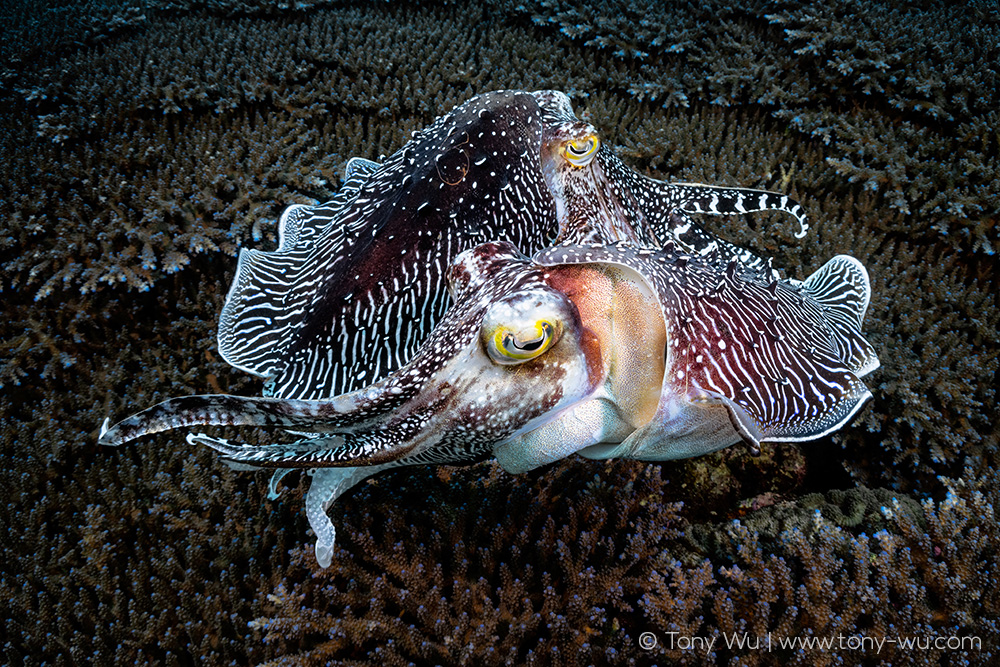
Note the belligerent patterning and body language.
The best contests (from a human point of view) happen when males are about the same size, as in the photo above. That’s when major spectacles are likely to result. When one individual is obviously larger, there is usually no battle per se. Just a big cuttlefish conveying “Scram!” to a smaller one.
When all is said and done, the successful male approaches a receptive female, strokes her until the moment she indicates it is time to mate.
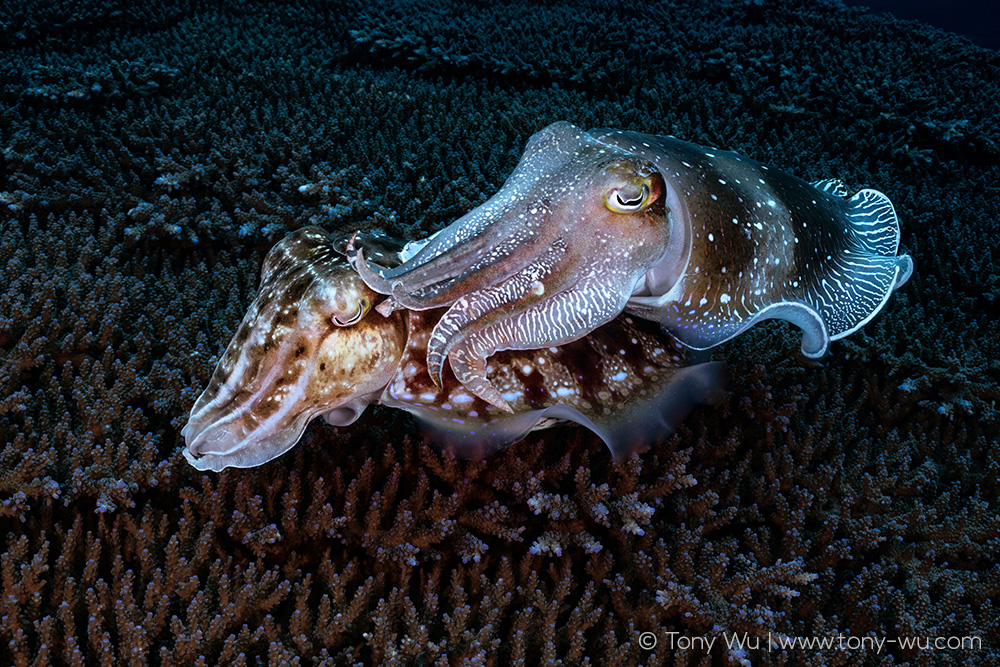
When the female is ready, the cuttlefishes face one another and intertwine tentacles. The male passes a packet of sperm to the female.
It can be a tender affair.
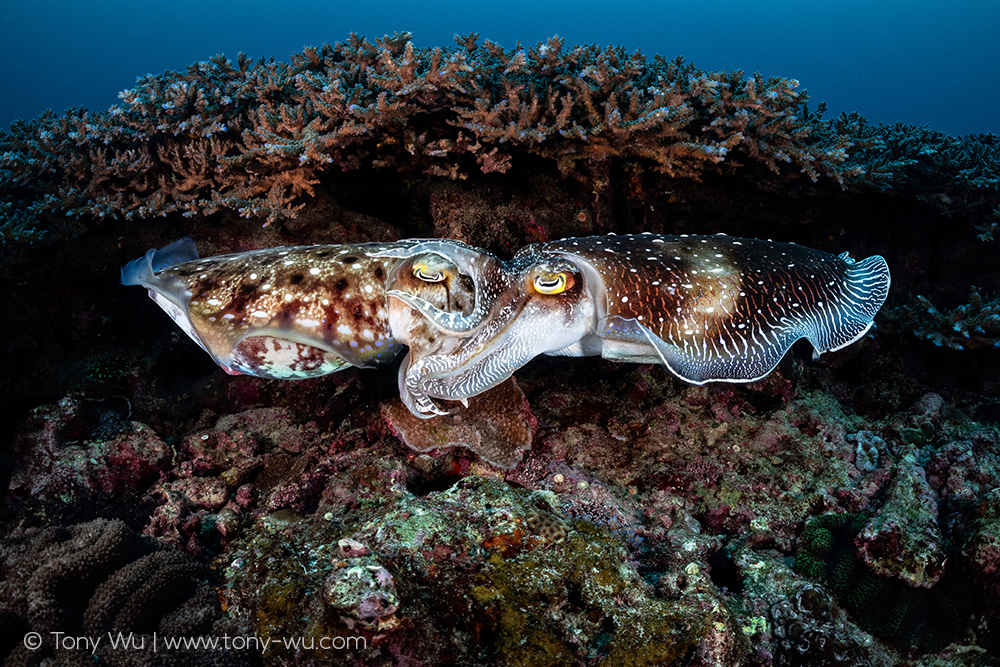
The female then searches for just the right spot to deposit eggs. The male usually tags along, not because he is particularly useful, but because he wants to ensure that no other males sneak in to mate.
When a female makes a scrunched-up face like this…
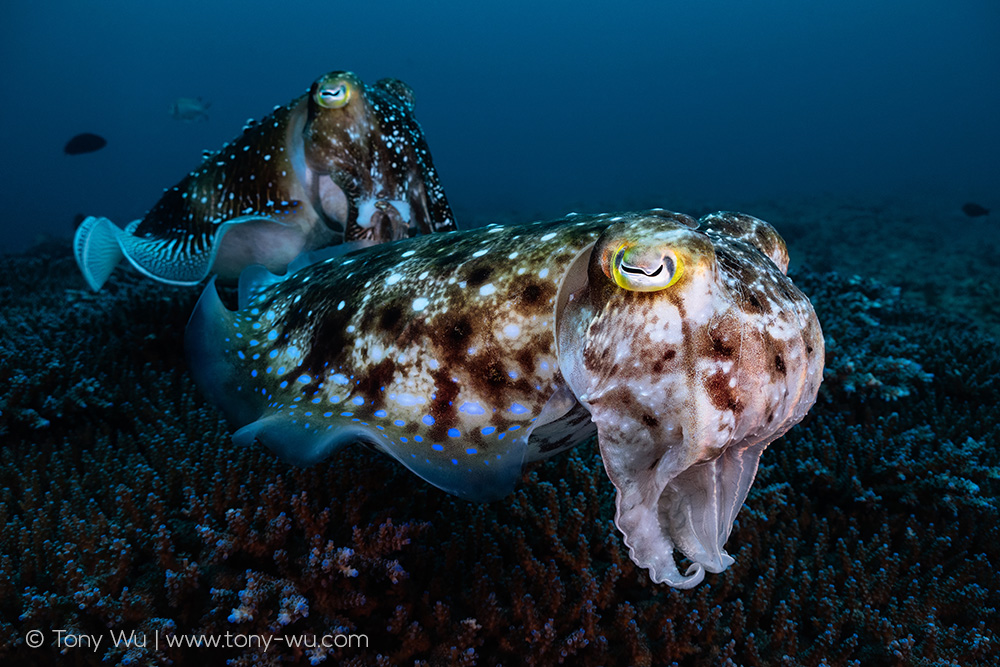
…it means she’s picked the perfect place and is inseminating eggs.
And finally, the female leans in, extends her tentacles and deposits eggs into the coral. She repeats the process, presumably until the sperm packet runs dry.
